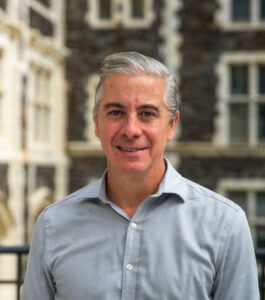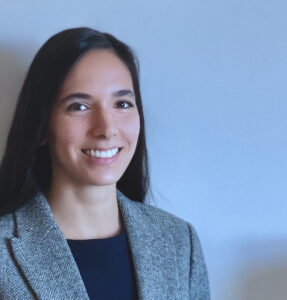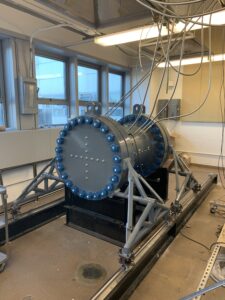Manhole covers being blown into the air due to explosions and fires is not an uncommon occurrence in New York City. This phenomenon, which can’t be completely explained yet, causes property damage and poses a threat to technicians who go down into the manholes to maintain the electric wires.
In 2021, the number of manhole displacement incidents totaled 281, an increase from the prior year.

Dr. Marco Casataldi
Dr. Marco Castaldi, who heads the Department of Chemical Engineering at City College, along with his colleagues, Professor Jeff Morris and Professor Yiannis Andreopoulos, from the Grove School of Engineering was tasked by ConEdison to investigate why this phenomenon occurs. To find an answer, a gas chamber was built that could be used to understand the explosions and mitigate their effects.

Lauren Creadore
The project began in 2017 and during the pandemic doctoral candidate Lauren Creadore joined the team. Creadore is currently the only student who has the safety training to do hydrogen detonations within the blast chamber.
Before the blast chamber was built, a large amount of analytical work and calculations were done. It became fully operational last summer and was presented to ConEdison. A live demonstration displayed the data it captured, including pressure changes, composition changes, and temperature. Currently, the team’s initial tests have confirmed the capabilities of the chamber, including those afforded by its uniquely large size. The chamber is sized such that it must be able to withstand the amount of energy produced by the blasts, capture the physics of the event, and fit mitigating solutions within [its cavity].

Blast Chamber, located at the Combustion and Catalysis Lab at CCNY
Creadore emphasized that the research has just begun and there are still many questions left to answer.
“The further you go along, the more questions you have to ask, really, it’s not like things get resolved, you just ask new things as well.”
Along with manhole explosions being a threat to people and property, it also brings attention to challenges in our underground energy infrastructure. Although there is new infrastructure being built, a lot of the hardware in use is aging.
Through using the chamber, the team will be able to determine what type of gasses could be generated or found in manholes and determine the strength needed to have the manhole cover, which can weigh up to 300 pounds, fly into the air.
Though the chamber was built with a very clear purpose in mind, Castaldi’s and Creadore’s second research goal is understanding detonation, deflagration, and combustion behaviors at a large scale. This research has the potential to be applied to different industries.
“In its most direct sense, it is to serve a need that’s related to our current energy infrastructure, but as researchers and engineers, we also would love to use this tool to kind of tackle future energy problems.”
One area they’re interested in is fuels produced from renewable sources or waste sources and their capabilities to perform like regular fuels. These fuels may not have the ability to create strong deflagrations but, with the chamber, the team can test the new fuels and see how they perform.

Malina Seenarine is a recent graduate of Baruch College where she studied journalism and minored in theater. In addition to writing for The RICC, she’s a contributor for Baruch’s award-winning Dollars & Sense Magazine and wrote for the arts and news section of Baruch’s student-run newspaper, The Ticker. She’s also written for FSR magazine.